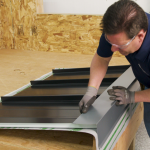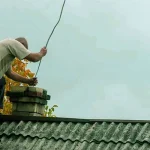Protecting Your Property from the Elements: The Essential Role of Metal Flashings
In the ever-evolving world of building materials and architectural solutions, the humble flashing often goes unnoticed, yet it plays a critical role in maintaining the structural integrity of any property. At its core, flashing refers to thin materials installed to direct water away from certain areas of a building, particularly where different surfaces meet, such as around chimneys, vents, skylights, or roof intersections. While flashings can be made from a variety of substances, metal flashings remain the most durable and dependable option due to their strength, longevity, and resistance to weather-related wear.
Why Choose Metal Over Other Materials?
Not all flashings are created equal. When it comes to longevity and reliability, metal stands out as a superior choice. Unlike rubber or plastic alternatives, metal offers unparalleled resilience, particularly in harsh or changeable climates. Whether exposed to heavy rain, blistering sun, or frost, flashings retain their shape and function far longer, providing consistent protection where it’s needed most.
Another reason builders and homeowners opt for metal is its versatility. It can be shaped to suit various architectural features and adapted for different building types, whether residential or commercial. Additionally, metal is fire-resistant, non-combustible, and less prone to deterioration over time, making it a sensible choice for those looking for both safety and practicality.
Key Areas Where Flashings Are Installed
Flashings are typically found in the more vulnerable parts of a building—areas where water infiltration could cause serious issues if not properly managed. For instance, roof valleys, where two sections of the roof meet, are prime candidates for metal flashings because they tend to collect and channel water. Similarly, the bases of walls, parapets, and roof penetrations (like skylights and chimneys) also benefit from the additional protection these components offer.
Without adequate flashing, moisture can seep into the building envelope, leading to a host of potential problems, including mould growth, rotting timber, weakened foundations, or even internal water damage. Thus, having properly installed and maintained flashing is more than a construction detail—it’s a defence mechanism against long-term deterioration.
Maintenance and Longevity
Although metal is highly durable, even the best installations need occasional inspection. Over time, exposure to environmental elements might lead to slight warping, rust spots (depending on the type of metal used), or loosening. It’s advisable to schedule routine checks—especially after extreme weather events—to ensure all flashings are still securely in place and functioning as intended.
Some property owners mistakenly overlook flashing during maintenance because it’s often concealed beneath roofing materials or trim. However, by including metal flashings in your regular building assessments, you ensure that small issues can be corrected before they become costly repairs.
Aesthetic and Functional Considerations
While the primary function of flashing is to protect against water damage, it also contributes to the overall finish of a structure. The clean lines and neat edges that well-installed flashings provide can enhance the visual appeal of a building. Many architects and builders now view flashing not only as a necessity but also as a design element that complements the rest of the structure.
Modern techniques allow for flashings to be produced in a range of colours and finishes, enabling seamless integration with roofing or cladding materials. This combination of form and function reflects the evolving role of flashings in contemporary construction, where aesthetic cohesion and structural integrity go hand in hand.
Conclusion: A Small Component with a Big Impact
In the realm of property construction and maintenance, it’s often the less visible elements that make the greatest difference in performance over time. Metal flashings may seem like a minor detail, but their importance cannot be overstated. They act as a protective barrier against the ever-present threat of water intrusion, preserving the longevity and value of your investment.
Whether you are involved in a new build or upgrading an existing structure, taking the time to consider the placement and material of your flashings is a decision that will pay dividends in durability and peace of mind. In climates where conditions can shift quickly and unpredictably, the robust protection provided by flashings serves not just as a precaution but as a fundamental necessity for long-term property preservation.















